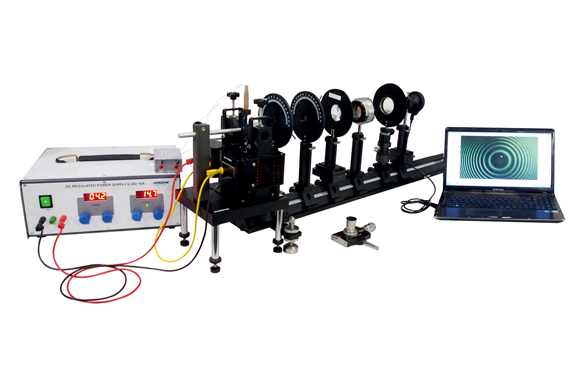
Principle and Working:
The Zeeman effect is the splitting of atomic energy levels, under application of external magnetic field, which are additionally characterized by the orbital and spin angular momentum or Bohr’s Magneton.
...
In this set up the normal Zeeman effect is investigated which characterizes the splitting of energy levels observed by the spectral lines of corresponding electron transitions. A line triplet perpendicular to the magnetic field and a line doublet parallel to the magnetic field having very small difference in wavelengh is observed instead of a single line without magnetic field. The splitting of 546.1 nm wavelength from Mercury light source under strong magnetic field in transverse and longitudinal direction is observed through CMOS camera on computer. The Bohr’s Magneton can be calculated from the measurements in experiment.